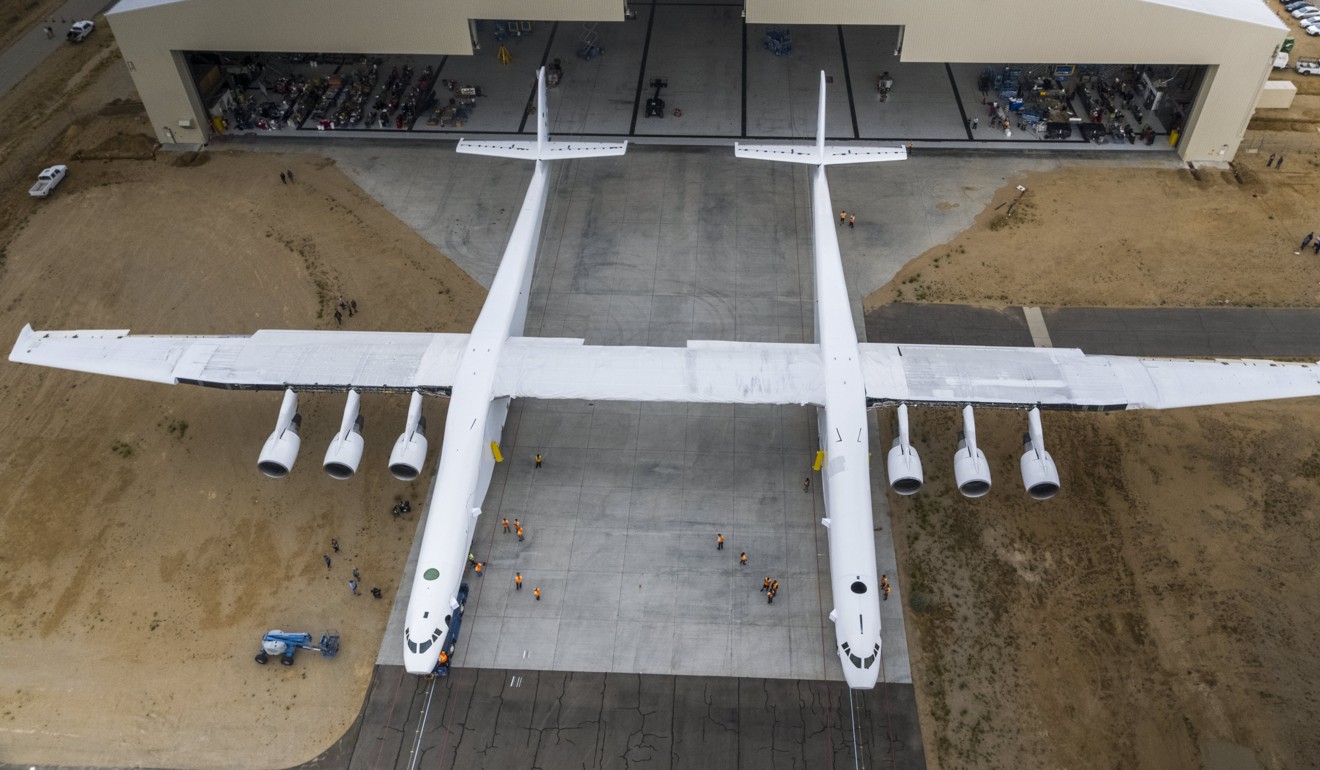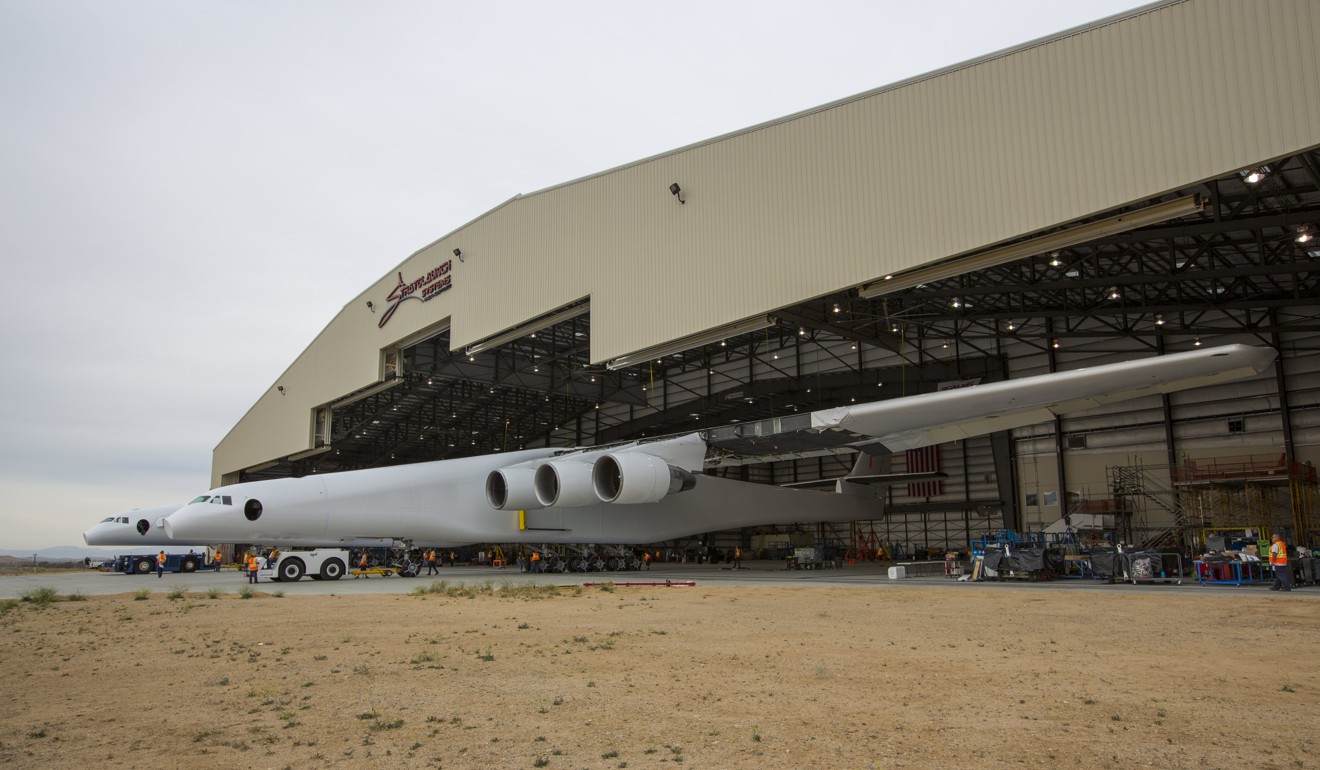
This is Stratolaunch: world’s largest airplane, with 117-metre wingspan, rolls out of hangar
The initial construction on the massive airplane that billionaire Paul Allen has been quietly building in the California desert is complete.
The world’s largest airplane - assuming it eventually gets off the ground - was wheeled out of its hangar for the first time on Wednesday.
Called Stratolaunch, the plane has some impressive stats: a wingspan of 117 metres, or longer than a football field, a height of 15 metres. Unfueled, it weighs 227 tonnes. But it can carry 113 tonnes of fuel, and its total airborne weight can reach as high as 590 tonnes.
But, really . . .. How big is it? It’s so big that it has 28 wheels and six 747 jet engines. It’s so big that it has 100km of wire coursing through it.

It’s so big that to truly get a sense of it, you have to see it from a distance - like a mountain.
But why is Allen, the co-founder of Microsoft and owner of the Seattle Seahawks, building such a massive plane?
It’s not to carry passengers, but rather rockets. The bigger the plane, the larger the rockets, or the greater the number.
Allen’s Stratolaunch company has partnered with Orbital ATK to “air launch” the company’s Pegasus XL, a rocket capable of delivering small satellites, weighing as much as 450kg to orbit. The rockets would be tethered to the belly of the giant plane, which would fly them aloft, and once at an altitude of 10,000 metres or so, the rockets would drop and “air launch” to space.
“With airport-style operations and quick turn-around capabilities,” the company said it believes “air launch” is a cheaper and more efficient way to get satellites into space than rockets that launch vertically and can be extraordinarily expensive.


More than a decade ago, Allen had hoped to spark a revolution in space travel when he funded SpaceShipOne, which became the first commercial vehicle to cross the threshold of space. The project ultimately won the Ansari X Prize, and a US$10 million award. He then licensed the technology to Branson and moved on to other pursuits. But with Stratolaunch, he is back in the space business.
“Thirty years ago, the PC revolution put computing power into the hands of millions and unlocked incalculable human potential,” he wrote. “Twenty years ago, the advent of the Web and the subsequent proliferation of smartphones combined to enable billions of people to surmount the traditional limitations of geography and commerce. Today, expanding access to LEO holds similar revolutionary potential.”
In a statement Wednesday, Jean Floyd, Stratolaunch’s chief executive, said the company would be “actively exploring a broad spectrum of launch vehicles that will enable us to provide more flexibility to customers.”
He added: “Over the coming weeks and months, we’ll be actively conducting ground and flightline testing at the Mojave Air and Space Port. This is a first-of-its-kind aircraft, so we’re going to be diligent throughout testing and continue to prioritize the safety of our pilots, crew and staff. Stratolaunch is on track to perform its first launch demonstration as early as 2019.”
The Antonov Mirya is the world’s largest plane by takeoff weight, at 640 tonnes.

